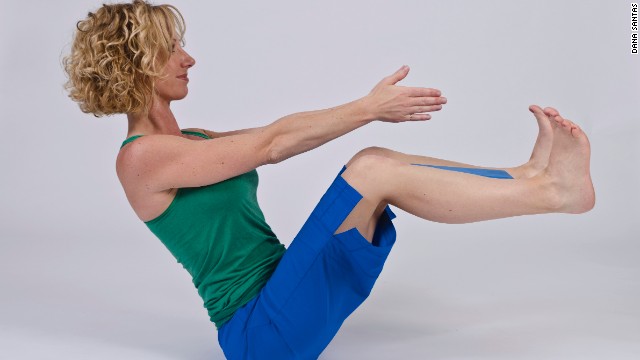Sciatica is a real pain in the butt — and, sometimes, in the leg and foot.
That’s because the sciatic nerves, the longest nerves in your body, run bilaterally from the base of the spine through the deep muscles of the buttocks and all the way down the back of each leg.
When impinged, they cause significant discomfort, ranging from relentless throbbing in one side of your buttocks to shooting pain down the back of your leg. And as if that isn’t enough, the pain is often accompanied by numbness, tingling and weakness.
Experts estimate up to 40% of adults have experienced sciatica. If you’re one, you’ve probably scoured the Internet looking for ways to make it stop, only to encounter conflicting advice. That’s because sciatica is actually a symptom of many possible conditions that respond to different treatments.
Because of sciatica’s varying causes, there isn’t a single magic bullet for relief. However, yoga, when applied correctly, can be effective in not only relieving sciatica, but also preventing it.
As someone who’s suffered from sciatica myself and worked with afflicted professional athletes, I’ve created customized yoga programs for a variety of diagnoses. That’s why I’m sharing these six poses that work in different ways.
Terms to know:
Sciatica — pain that radiates along the path of the sciatic nerve
Sciatic nerve — this runs from your low back through your hips and buttocks and down each leg
Piriformis muscle — located on the front part of your body in the hip area
Hip flexor — a group of muscles that help you move your leg from the hip
Hamstring — a group of muscles on the back of your thigh
(If you’re diagnosed with Piriformis Syndrome, it’s important to recognize that a dominant-side imbalance may affect your response to these exercises.)
Check with your physician or physical therapist before trying these exercises. Move carefully into each posture, listening to your body. Stop immediately if pain increases or you feel any cautionary sensation.
Modified boat with block
If your sciatica is lumbar-spine related, this pose can help by strengthening deep core muscles to stabilize your low back. It also works the adductors (inner thighs) to help realign your pelvis.
Sit evenly on your sitting bones and place a foam yoga block between your shins with your knees bent to 90 degrees. Engage your low, deep core to avoid arching your back as you lift your legs. Hold for five long, deep breaths, lower your legs, then repeat. Build up to longer holds for as many as 10 long, deep breaths.
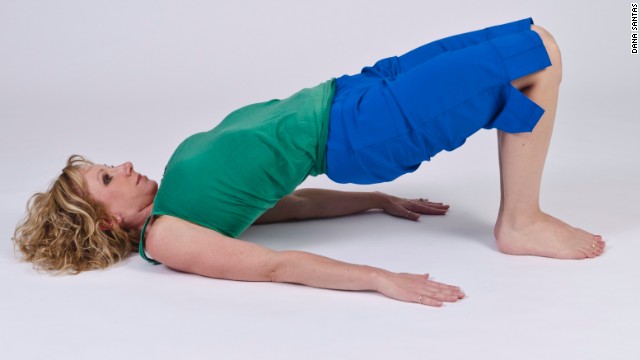
Bridge with knees together
Whether your sciatica originates from your low back or the piriformis muscle in the buttock, this pose should help. It strengthens the low back and supporting musculature while simultaneously opening the hip flexors. Keeping your knees together activates inner thighs, which oppose outer hip muscles, including the piriformis.
Start from a bridge position on all fours with your knees and feet together. Inhale and lift your hips to align diagonally with your shoulders and knees. Avoid arching your low back. Hold for three breaths. Release down for a breath. Repeat three times.
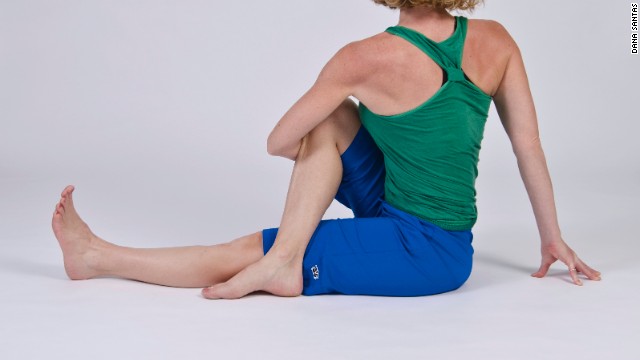
Seated twist variation
This mid-back rotating twist stretches the piriformis. Use caution because incorrect twisting from your low back could exacerbate disc issues.The twist needs to initiate from the mid-back, between the shoulder blades.
Sit up straight with legs out. Cross the afflicted leg over your opposite leg and press the sole of the foot on your painful leg down. Hug your opposite arm around your knee, placing the other hand on the ground behind your hip. Exhale as you draw the leg toward your chest and rotate from your mid back. Hold for three long, deep breaths.
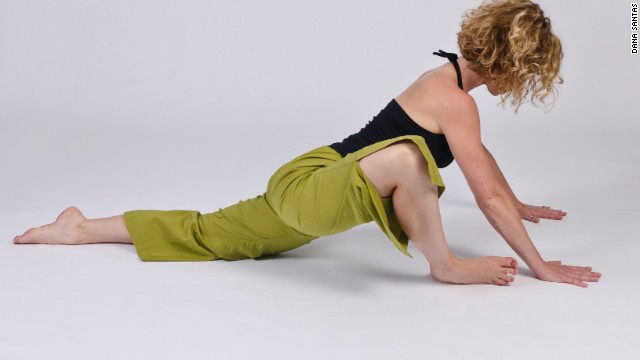
Pigeon pushup
This is a piriformis-stretching pose for the front leg and a hip-flexor stretch for the back leg.
From a kneeling lunge position, take both hands to the floor on the inside of your leg. Open your hip by letting your knee fall out to the side as you roll to the outside of your foot. Walk your hands forward and outward to push your weight out of your upper body and into your hips and pelvis. Take five long, deep breaths.
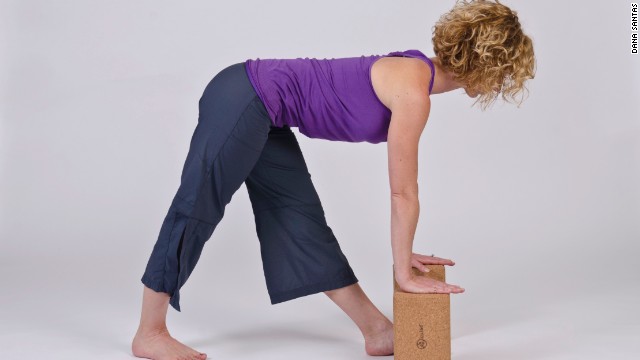
Modified pyramid
This pose is a combination of hamstring stretching and pelvis resetting. Some people swear by hamstring stretches, while others find it aggravates the nerve. Try it carefully. Back off if pain increases.
Keeping your afflicted leg forward, step back with your other leg about 18-24 inches. With both legs straight, hinge from your hips to bend forward, placing your hands on blocks or a chair seat. To find a neutral pelvis, push your forward hip backwards while drawing your back hip forward. Hold for five long, deep breaths.
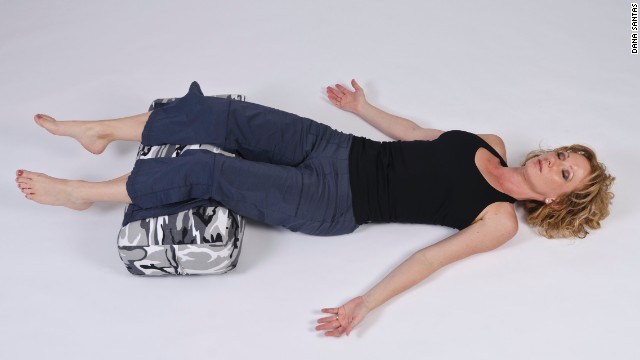
Supine with pillow under knees
Being in constant pain is exhausting, so this pose is intended for rest.
Lying face up, place a pillow or bolster under your knees with your legs hip-distance apart. Be sure your low back is making contact with the floor. Avoid arching. Take 10-20 long, deep breaths, focusing on your exhales like big sighs of relief.
From: CNN

